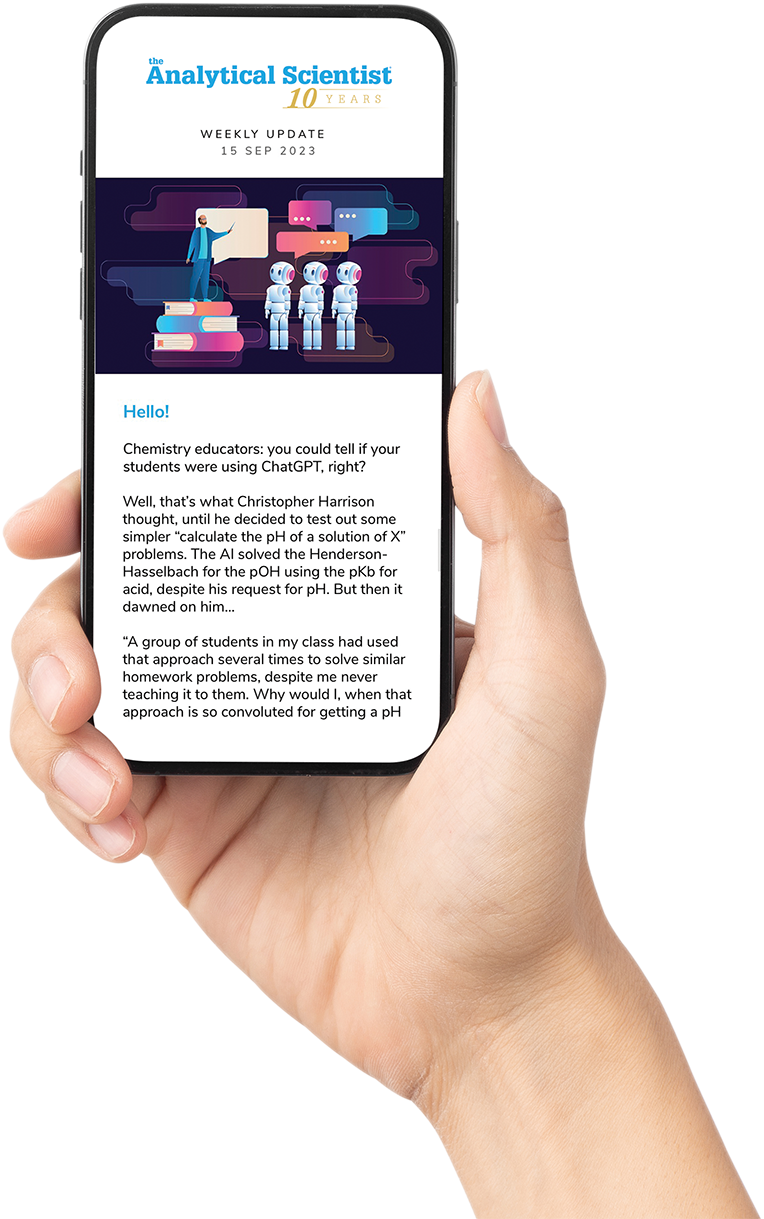
Credit: Kevin Gill from Los Angeles, CA, United States, CC BY 2.0 via Wikimedia Commons
This year’s Coblentz Society Williams-Wright Award goes to… David W. Schiering – a scientist-entrepreneur who has spent his nearly 40-year career developing vibrational spectroscopy instruments and methods. He is now a 908 Devices Fellow at 908 Devices. Schiering’s opening talk at 8:40am on Wednesday is followed by a presentation from David’s 908 Devices colleague, Christopher Brown. The company won our very first Innovation Awards back in 2014 – and Brown was one of several interviewees included in the follow up feature.
We also had our eye on Juergen Popp’s session on “enhancing medical diagnostics with AI-driven Raman Spectroscopy. Popp has penned a couple of articles for The Analytical Scientist on this topic – Enter the Metrix and Ready or Not.
Finally, I’d like to highlight Roy Goodacre’s talk on “Scaling Metabolomics Down to the Single Cell Level with O-PTIR Spectroscopy” (watch this space for more single cell spectroscopy content…); as well as Pittsburgh Spectroscopy Award winner Joseph Francisco’s presentation on “Unraveling The Chemistry Of Venus: Exploring The Spectroscopy And Photochemistry Of Sulfur And Chlorine-Based Molecules.”
Researchers use Raman spectroscopy to understand how the Mount Vesuvius eruption of 79 CE turned a man's brain into glass via cooling after heating to high temperatures. Link
Photocurrent spectroscopy uncovers hidden energy losses in photoelectrochemical water splitting, helping to make hydrogen production more efficient. Link
Researchers assess lung cancer progression and survival with infrared spectroscopy of blood serum – establishing a strong correlation between the infrared fingerprints and disease progression. Link
Operando impedance spectroscopy with combined dynamic measurements and overvoltage analysis enables detailed analysis of processes occurring under actual operating conditions within state-of-the-art lithium metal batteries, overcoming limitations of conventional electrochemical impedance spectroscopy. Link
BrightSpec launches the world's first commercial molecular rotational resonance (MRR) instruments for 50 years at Pittcon 2025: spectraMRR (for identifying chemical structures), isoMRR (for quantifying volatile organic compounds), and the benchtop nanoMRR. Link
Why is Mars Red?
A great question posed by many an inquisitive child. But parents, fear not: we have an answer that is sure to impress. Spectroscopic analysis of Martian soil has determined that poorly crystalline ferrihydrite is the dominant iron oxide-bearing phase in Martian dust responsible for the planet’s red hue – not hematite formed through recent weathering, as was previously thought.
The findings also suggest that at some point a more liquid or humid environment existed on Mars, which hydrated the iron oxide. But the existence of ferrihydrite also means that the presence of water was transient or the ferrihydrite would have likely transformed into a more crystalline structure, such as hematite or goethite, due to longer contact with water.
Advanced apologies that we are unable to help with any tricky follow up questions…
Smoke and Mirrors
Researchers at Rice University and Baylor College of Medicine (BCM) have used a combination of spectroscopic techniques and machine learning to rapidly and accurately identify toxic chemicals in placental tissue, distinguishing between samples from smokers and non-smokers.
Using surface-enhanced Raman spectroscopy (SERS) and surface-enhanced infrared absorption spectroscopy (SEIRAS), the team identified polycyclic aromatic hydrocarbons (PAHs) and polycyclic aromatic compounds (PACs) in smokers’ placenta samples. "Our work addresses a critical challenge in maternal and fetal health by improving our ability to detect harmful compounds like PAHs and PACs in placenta samples," said first author Oara Neumann, in the team’s press release. Read more
Dual-Site Catalyst Boosts CO₂-to-Methanol Conversion Efficiency
A newly developed electrocatalyst has significantly improved the efficiency of converting carbon dioxide into methanol, offering a scalable approach to recycling industrial emissions into renewable fuel. The method, developed by researchers at Yale University and published in Nature Nanotechnology, integrates a dual-site catalyst system that overcomes previous efficiency limitations via a molecular-scale "spillover" mechanism, where CO migrates from one catalytic site to another for optimized conversion.
Researchers used in situ sum-frequency generation vibrational spectroscopy (SFG-VS) to track CO spillover between nickel and cobalt catalytic sites in real time, confirming successful migration for methanol production. Complementary techniques, including XPS, AC-STEM, and XAS, provided insights into surface composition, atomic structure, and catalyst stability. Read more




